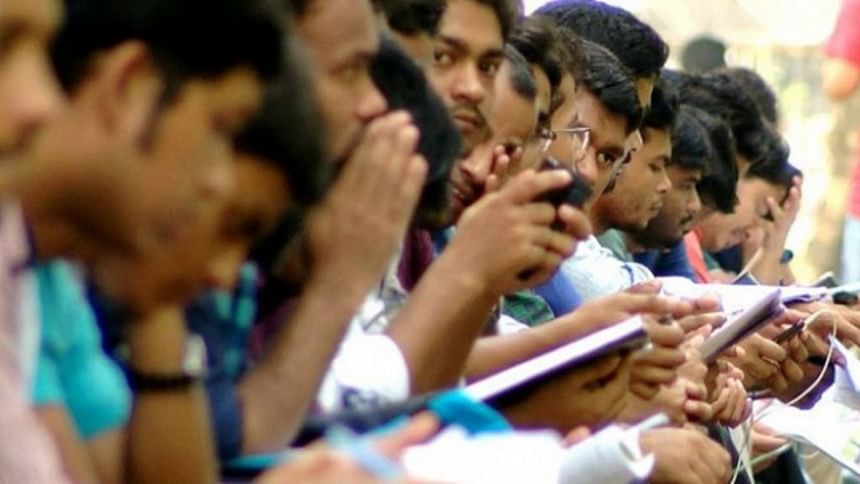Nepotism top barrier to youth employment

More than half of young jobseekers believe nepotism and a lack of formal education are the main barriers to entering the workforce in Bangladesh, according to a recent study released yesterday.
The study, which sought to understand the employment challenges faced by people aged 15 to 35 years, found that nepotism has emerged as the single biggest perceived obstacle to employment, as reported by 55 percent of young people.
Job scarcity and a mismatch between general education and job market needs were believed to be the other major barriers, it said.
Jointly conducted by the South Asian Network on Economic Modeling (Sanem) and ActionAid Bangladesh in May, the research encompassed 2,000 respondents in all eight divisions to make it nationally representative and socially inclusive.
"Case studies bring these statistics to life: one respondent, a schoolteacher-cum-single mother with a master's degree, earns less than Tk 5,000 per month," said the study led by Sanem Executive Director Selim Raihan.
"Another, a 30-year-old freelancer from Jhalakathi, has stopped applying for jobs knowing he would never be considered due to rampant corruption in recruitment," it said.
Presenting the findings at a discussion at BRAC Centre Inn in Dhaka, Shafa Tasneem, a research associate at Sanem, said nearly 39 percent of the participants believed a lack of work experience was affecting their ability to find employment.
Meanwhile, 37.74 percent cited the absence of suitable training opportunities, and another 37.29 percent pointed to unsuitable vocational education, she added.
The findings also showed that the current education system is not adequately preparing young people for the demands of the job market.
A lack of technical skills, such as proficiency in IT and computing, was also noted by 26.11 percent of the respondents.
Other obstacles included language barriers, as cited by nearly one-fifth of the respondents. Other major barriers are low wages, followed by discriminatory prejudices related to disability, religion, or race.
Job search durations also paint a grim picture—28.66 percent have been looking for a job for over two years, while only 1.83 percent started their search in April.
The study found that 41.75 percent of female respondents favour public sector jobs, compared to 32.87 percent of the males.
Gender-related challenges were also highlighted.
About 10 percent of respondents cited childbirth, family obligations, and reluctance to recruit new mothers as key employment barriers, while 8.54 percent pointed to biases based on gender identity and being considered too young.
Selim Raihan said the study set out to assess the status of young people across the country and evaluate their perceptions of job market preparedness, aiming to identify the gaps between education and employability.
Furthermore, it brings into careful consideration how the youths perceive the direction, inclusiveness, and effectiveness of political, social, and institutional reforms following last year's July movement to identify priority areas as pointed out by the youth, he said.
Ultimately, the research intends to amplify the demands and aspirations of the youth population so that policymakers and relevant authorities give it meaningful consideration, he added.
Bangladesh is currently in a crucial phase of demographic transition. Around 35 percent of the population falls within the age range of 15–34 years.
Farah Kabir, country director at ActionAid Bangladesh, questioned, "Did you imagine today's Bangladesh a year ago?"
Today's Bangladesh is the result of contributions from everyone—from youths to ordinary citizens, she said.
"We must not forget them. Those who gave their lives during this uprising must be remembered every July," she said.
The current interim government must act on the demand for justice against those involved in the killings, and the government that comes to power in the future must do even more, said Kabir.
"However, regarding the discrimination in government jobs that sparked this uprising, I cannot firmly say today that those who led it were truly committed to ending such inequality—or whether they still believe in that cause," she said.
"Because even now, we continue to witness discrimination at various levels," she said.

 For all latest news, follow The Daily Star's Google News channel.
For all latest news, follow The Daily Star's Google News channel. 



Comments